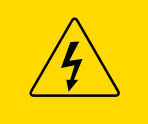DIY Fundamente
Fundamente zum Selbermachen

Für alle Ihre Vorhaben rund ums Haus - Betonlos!
Sie müssen nicht mehr mühsam Löcher graben, Erdhaufen entfernen, Beton mischen oder sitzen und warten, bis dieser ausgehärtet ist.
Jetzt geht es viel schneller und einfacher.


Gewächs- und Gratenhäuser


Terrassen

Sonnenschutz

Verlängerbare Schraubfundamente
- eignen sich am besten an Stellen, an denen die Länger der Stadard-Schrauben nicht ausreicht. Hohe vielzahl an Toppings und Verlängerungen ermöglichen eine schnelle Reaktion auf lokale Gegebenheiten.
Modularer Aufbau vereinfacht den Transport.

Fixe Schraubfundamente
- sind eine ideale Lösung für betonfreie Fundamentierung. Aufgrund der festen Länge ist es immer notwendig bestimmte statische Bedingungen und die Tragfähigkeit des Bodens zu bewerten.

Empfehlungsformel zur Auswahl des richtigen Schraubfundaments
Konstruktionsgewicht + Gewicht des Inhalts + Schneelasten / Schraubenzahl = Notwendige Traglast der Schraube
Folgende Aspekte müssen für eine richtige Auslegung beachtet werden: Gesamtgewicht der Konstruktion, Gewicht der Ausrüstung und Personen, die höhchste mögliche Schneelast der Region. Geländetopografie (Hanglage, flach). Untergrundqualität - weiche, schlammige, und Sandige Böden haben geringe Tragfähigkeit.
Tragfähigkeitswerte wurden bei halbfesten Lehm ermittelt und um einen Sicherheitsfaktor von 35 % reduziert.
Werte in der Grafik sind nur Anhaltswerte. Schraubfundamente müssen auf der Grundlage statischer Berechnungen ausgewählt werden.
Längenangaben gelten für den im Erdreich eingedrehten Schraubenbereich.
Der Hersteller haftet nicht für Schäden, die durch unzureichende oder falsche Auswahl der Schrauben entstehen. 1 kN = ca. 100 kg
Installation von DIY-Schraubfundamenten mit einm Getriebesatz 1:20
Getriebesatz 1:20 wurde nur für die Installation von BAYO.S DIY-Schraubfundamenten in natürlich verdichteten Boden bis zu einer Tiefe von 1000 mm entwickelt.
FAQ
How do the ground screws stay in the ground? The screws penetrate and make the adjacent soil more compact during installation, thus reinforcing their own position.
Can I do it myself? Yes, you can screw a hobby set on your own, with no help.
Do I install a ground screw and then concrete it? No, it’s a dry process with no need for concrete. For example, you might cover the screw with a 2-5 mm sharp-edged stone when building a fence post.
Do I need to buy a hand installation tool or can it be rented from a retailer? The retailer will loan you the installation tool with a refundable deposit, or you can buy it.
Regarding frost depth, does frost force a ground screw to the surface? In the Canada, the level of frost depth ranges from 80 to 140 cm below the surface, depending on the type of soil. The screws have threads that prevent any countermovement, preventing the soil from moving the smooth body of the screw to the surface. Each structure should be assessed and judged individually.
How do I choose the most appropriate type of ground screw? Where can I get advice? You can ask your retailer or send us an email. Indicate the type of construction, your construction demands, building material, dimensions, and specifics about the terrain.
Do I insert the fence post first and then apply concrete? No, you can side-fill the fence post with 2 to 5 mm of sharp-edged crushed stone.
How thick is the layer of zinc on the ground screws?
70 microns (µm)
Is it possible to build a construction on uneven terrain? Yes, it is possible. You can carry up the raster of the construction with a thick-wall steel pipe, wooden joint, or you can use another ground screw.
Can I install ground screws in close proximity to a wall? Yes, the minimum distance is 40 cm from a wall; however we recommend a distance of 60 cm.
If there is sand, landfill, or marsh on the property? We do not recommend the use of ground screws on wet, marshy land – they will not hold in this type of base. You would need to be grounded against the bottom of the marsh. In the case of a landfill, you need to assess how long the landfill has existed. If it’s more than 10 years or is sufficiently compacted, it should pose no problem.
Can the ground screw be installed using anything other than a hand installation tool? Yes, you can screw the ground screw using one screw tip C and a rotary bar (approx. 60 cm). Insert a screw tip on the screw, place the bar through the screw tip and turn the screw clockwise.
What if there are stones, marlstone, slate, rocks on the property? We recommend pre-drilling a hole with a 20-30 mm SDS drill at the installation point. You can buy one compact ground screw and try it in several locations to test.
What is the bearing capacity of a ground screw? The capacity is based on the type of screw and the soil type equal to 200-7,000 kg per one ground screw.











